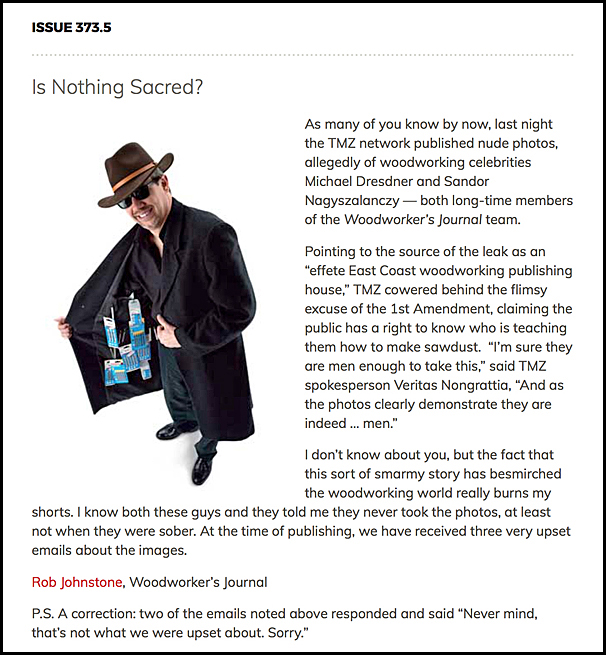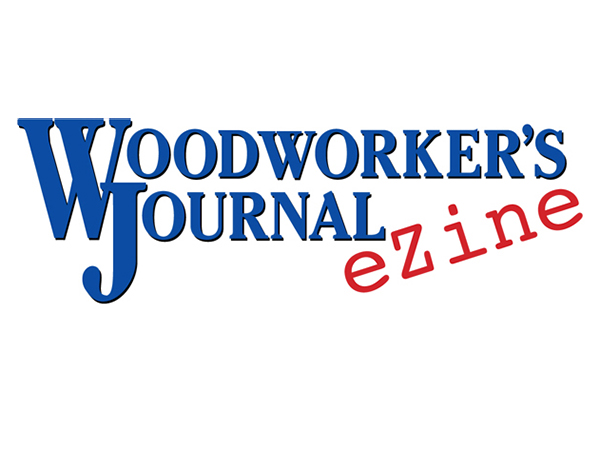
Prior to the eZine’s very first issue, back in February 2000 Woodworker’s Journal had only been a print magazine. What were your influences at that time to start an online newsletter?
It was the late 1990s and people were trying to figure out what this Internet thing was all about. It was clear that people were interested in it, but it is hard to remember how DIY and non-professional the web was at that time. It was confusing. I would ask people how do we make money (a baseline question for any publishing company) on the Internet and they would tell me that making money was “20th century thinking …” “if you get the ‘eyeballs’ that’s all you need.” “The web is a whole new paradigm, and making money is not the goal.”
Still, I really wanted to do something substantial on the web. After a lot of discussion with folks like Scott Ekman here at Rockler Woodworking and Hardware, our parent company, and having some really odd ideas being floated around, I finally just said: “We know how to make a magazine — let’s just publish one on the web.” And we got started figuring out how to do that.
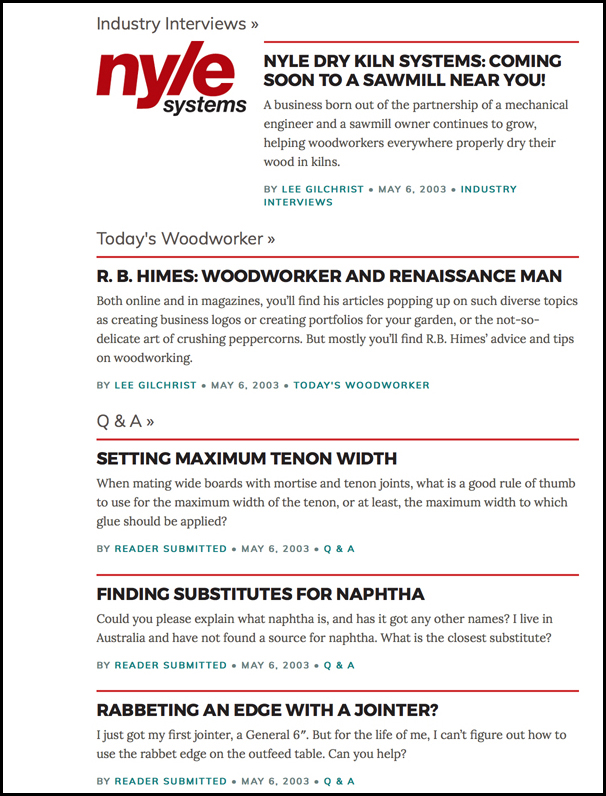
To do something this innovative for woodworking print publishing, you must have had some reservations, too. What were they?
There were many. First, what would woodworkers want to read or learn about on the web? Maybe woodworkers were not computer dudes; would there even be an audience? And if you can remember back that far, almost everyone connected to the net on dial-up modems — images and graphics took forever to open. For that reason, the first eZines were 99 percent text and graphics were few (just take a look at one of our early issues above this question!). It was very primitive by today’s standards. And then there was that problem of making money. Let’s just say that the P&L that I projected for the first year was a bit ambitious. Larry Stoiaken, the Journal’s publisher at the time, used words like “fictitious” and “delusional” to describe my “conservative estimates” at the end of our first year.
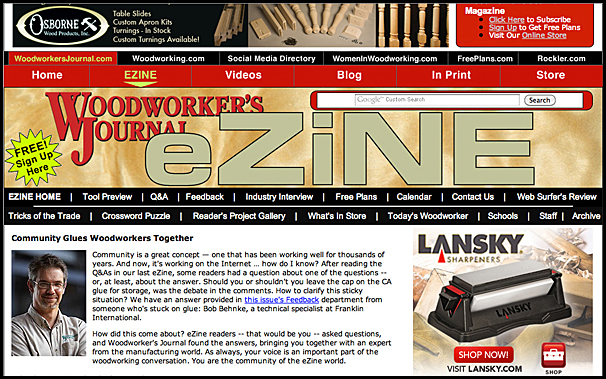
Since this was a new thing, how were the initial eZine subscribers found/recruited?
Well, Woodworker’s Journal already had a website, but it was pretty static. Even so, we did get some folks to sign on from there. And we mentioned it in the print magazine. But the real leg up we had was the email list that Rockler had gathered. They let us send subscription emails to their list and that really got it going. But then to our surprise, we started to gain subscribers at a pretty good clip. The eZine was free, of course, and it turned out that many woodworkers were early adapters to the Internet. And on top of that, it is hard to describe how groundbreaking the eZine was at that time. There were just not many people sending out email newsletters in 2000 and none in the woodworking space. It turned out that it was an idea that fit the times.
Did it take some convincing to encourage advertisers to give the eZine a try?
As I said earlier, subscribers came in fairly quickly. But at the beginning it was brutally hard to get advertisers interested in the eZine. We would approach big-time advertisers and they would say things like, “You can actually put an ad on the Internet? How does that work? Weird!”
Many of the companies in the industry did not have websites, and those that did often had them only for their dealers. “Why would our customers care if we had a website?” they would say. On top of that, the eZine was not great to look at, so if you showed them a printed version of the site, you would often just get silence and a shake of the head. Like I said — brutal. We gave away a lot of free ads at the beginning, just to prove the concept. (Did I mention how bad my P&L looked the first year?)
Then there was the little thing called the dot-com bubble. Apparently eyeballs were just not sufficient to support websites, and the whole view of the Internet shifted. But after the first year, as we proved that we not only had great online content but a lot of readers, we began to make headway with advertising.
And it was very helpful that we had signed up most of the industry executives as subscribers to the eZine (that sort of thing would be exceedingly bad form to do today … but these were the Wild West days on the web) and it showed up in their email box every Tuesday.
While eZine readers have obviously continued to find value in the publication, a brief attempt at offering a “premium,” paid version of the eZine, with additional features, was not a success. Can you speak to some of the experiments attempted with the eZine over the years?
![]()
It’s often said that if you have not made any mistakes, you simply aren’t trying hard enough. And let me just say that we tried very, very hard. To quote the Nixon administration, “Mistakes were made.” But even so, we always had a lot of fun as we tried new things. Our poetry contests were epic! Our readers were great sports and some were actually pretty good poets! And the T-shirt slogan contest really made my day. My favorite was one of three that actually got on our T-shirts: “I came, I sawed, I conquered.” From the very first days, our goal was to respect and take our readers seriously, but to not take ourselves seriously. That mindset has served us really well.

What are some ways the eZine’s format and content have evolved over the years to become an even better and more vital publication?
In terms of its graphics, there is no comparison to the early days. Some dial-up connections back in the day would take several long minutes to open even the smallest images, but now we are all in on the pretty stuff, video and GIFs. And as we have developed an advertising base, we were able to add things like the crossword puzzle (the only crossword in the world that I have a chance to complete!) and to increase the publishing frequency from every other week to weekly. We still offer free plans every week and my glowing weekly editorial … and of course the WJ staff’s favorite eZine: the April Fool’s goofball extravaganza.
But what drives the improvements we have made and will make is the feedback we get from readers. Our readers, who are the greatest, have told us what works and what does not. (See the big mistakes comment above…)
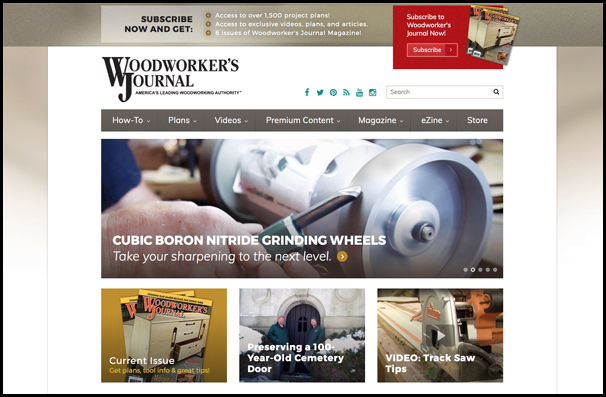
How do you feel social media outlets and the influence of video have impacted the eZine and its community of readers?
I think the development of the web as a sophisticated means to deliver information has only reinforced the value of the eZine. We have improved the eZine’s platform and our ability to deliver video in step with the changes around us. Social media is something that Woodworker’s Journal engages in and uses to spread the woodworking gospel, right along with the eZine. And if you think about it, at its most basic level, the eZine is a blog. Perhaps the granddaddy of woodworking blogs!
Where we as an organization provide value is that the Journal has been making woodworking content for a long time. And our number one value for that content is quality. So, while there are a lot of folks blogging and making videos about how to make stuff and cool woodworking tricks these days — people on the web can trust us in terms of the quality of the information we put out. That is not true across the spectrum of web content.
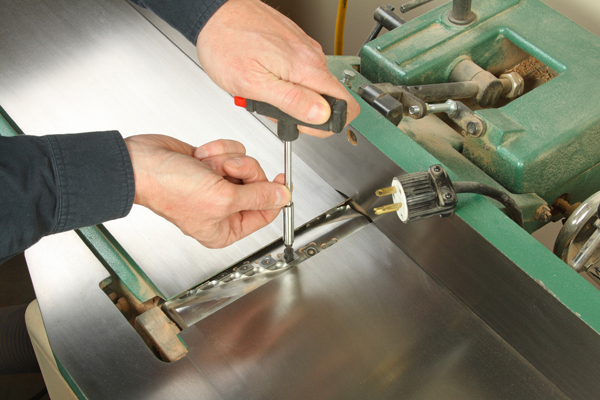
Going forward, this publication will be called Woodworker’s Journal Weekly. Why the name change?
The term “eZine” is a late 1990s anachronism, so it described our product in the early 2000s perfectly. But as I have pointed out, the eZine has changed with the times in terms of page design, content and cadence, so we thought with this 500th issue we should update the name. And while it is not apparent to everyone, this issue is new in more than layout and name. The email component of this issue is being sent out on programming that is much more mobile friendly in terms of reading it on a phone or tablet. Change is constant, and in this case I think it is good.
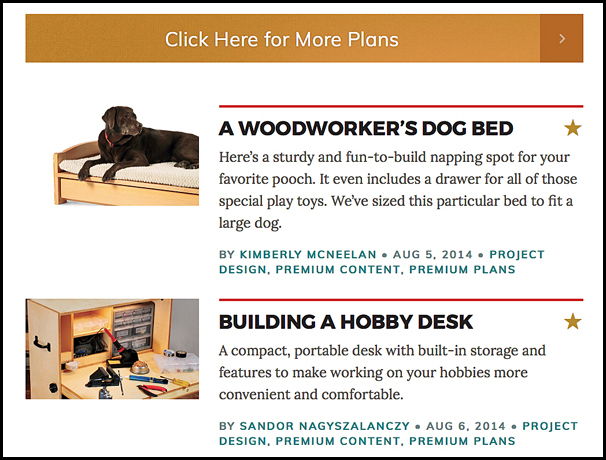
At this 500th-issue milestone, how has the mission and value of the eZine changed, if at all, from Issue #1?
At the core it remains the same: woodworking information presented in a fun, interesting and informative way, always respecting the readers. In terms of that effort and those values, it is the people who have worked on the eZine that have exemplified them in a tangible way. Bob Filipczak was our first editor, and the outline of his work is still to be seen. Lee Gilchrist was our next editor until his untimely passing. Michael Dresdner, a remarkable woodworking and finishing talent, was our main editor for several years. And Joanna Takes, who has for years driven the eZine “boat” professionally and with perfect punctuation — her efforts are too many to be listed. Chris Marshall has been a big help, too. Matt Becker, Matt Hocking, Dan Cary — all content experts who actually put the whole thing into shape every week, adding functionality and fixing the publication when those important zeros and ones stop performing. David Beckler, Alyssa Tauer and Dana Severson have sold and managed the ads that allow us to present the whole thing for free. All of these folks and others that I am surely forgetting have held our work to high standards and professional quality — and they did not forget to have some fun, too. My thanks goes out to them for all they have done and continue to do.

What are your hopes for “Woodworker’s Journal Weekly” as we look ahead to the next 500 issues?
My hope for the “Woodworker’s Journal Weekly” is that it remains not only relevant but valuable in the community of woodworkers. Through its quality and outreach, I hope that it continues to inspire folks to become woodworkers and learn the joy of our craft.
AND that it lets me write some really awful humor every April 1!
